Related Research Articles
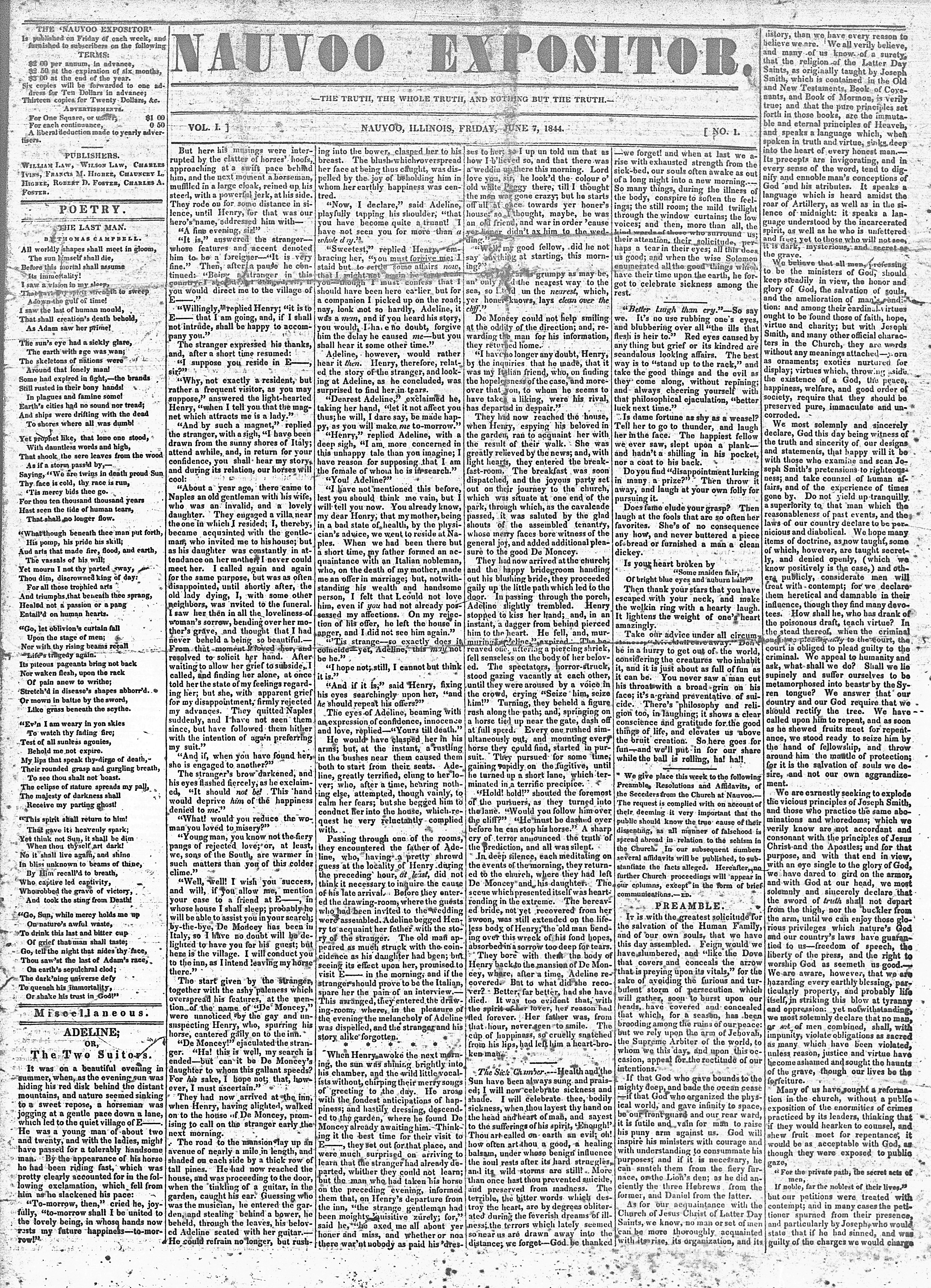
The Nauvoo Expositor was a newspaper in Nauvoo, Illinois, that published only one issue, on June 7, 1844. Its publication, and the destruction of the printing press ordered by Joseph Smith, set off a chain of events that led to Smith's death.

The Latter Day Saint movement is the collection of independent church groups that trace their origins to a Christian Restorationist movement founded by Joseph Smith in the late 1820s.

"The Council of Fifty" was a Latter Day Saint organization established by Joseph Smith in 1844 to symbolize and represent a future theocratic or theodemocratic "Kingdom of God" on the earth. Smith prophetically claimed that this Kingdom would be established in preparation for the Millennium and the Second Coming of Jesus.

The Latter Day Saint movement is a religious movement within Christianity that arose during the Second Great Awakening in the early 19th century and that led to the set of doctrines, practices, and cultures called Mormonism, and to the existence of numerous Latter Day Saint churches. Its history is characterized by intense controversy and persecution in reaction to some of the movement's doctrines and practices and their relationship to mainstream Christianity. The purpose of this article is to give an overview of the different groups, beliefs, and denominations that began with the influence of Joseph Smith.

Carthage Jail is a historic building in Carthage, Illinois, listed on the National Register of Historic Places (NRHP). It was built in 1839 and is best known as the location of the 1844 killing of Prophet Joseph Smith, founder of the Latter Day Saint movement, and his brother Hyrum, by a mob of approximately 150 men. It was added to the NRHP in 1973 and is operated by The Church of Jesus Christ of Latter-day Saints as a historic site with an adjacent visitors' center.
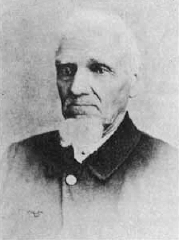
William Smith was a leader in the Latter Day Saint movement and one of the original members of the Quorum of the Twelve Apostles. Smith was the eighth child of Joseph Smith Sr. and Lucy Mack Smith and was a younger brother of Joseph Smith Jr., the founder of the Latter Day Saint movement.
The succession crisis in the Latter Day Saint movement occurred after the death of Joseph Smith, the movement's founder, on June 27, 1844.
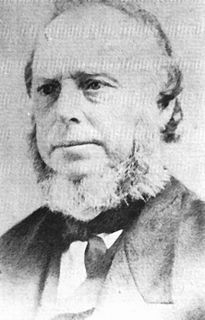
William Law was an important figure in the early history of the Latter Day Saint movement, holding a position in the church's First Presidency under Joseph Smith. Law was later excommunicated for apostasy from the church and was founder of the short-lived True Church of Jesus Christ of Latter Day Saints. In this capacity, he published a single edition of the Nauvoo Expositor, the destruction of which set in motion a chain of events that eventually led to Smith's death.
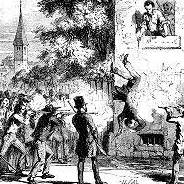
Joseph Smith, the founder and leader of the Latter Day Saint movement, and his brother, Hyrum Smith, were killed by a mob in Carthage, Illinois, United States, on June 27, 1844, while awaiting trial in the town jail.
Granville Hedrick was a leader in the Latter Day Saint movement after the 1844 succession crisis. In 1863, Hedrick became the founding leader of the Church of Christ, which is one of many churches that claim to be a continuation of the Church of Christ founded by Joseph Smith in 1830.
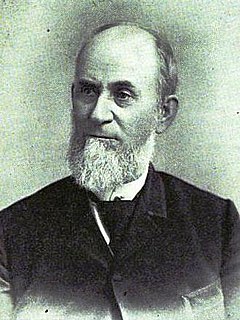
William Wallace Blair was an apostle and a member of the First Presidency of the Reorganized Church of Jesus Christ of Latter Day Saints.
The history of Nauvoo, Illinois, starts with the Sauk and Fox tribes who frequented the area. They called the area "Quashquema", named in honor of the Native American chief who headed a Sauk and Fox settlement numbering nearly 500 lodges. Permanent settlement by non-natives was reportedly begun in 1824 by Captain James White. By 1827 other white settlers had built cabins in the area. By 1829 this area of Hancock County had grown sufficiently so that a post office was needed, and in 1832 the town, now called "Venus", was one of the contenders for the new county seat. However, the nearby city of Carthage was selected instead. In 1834 the name Venus was changed to "Commerce" because the settlers felt that the new name better suited their plans. In late 1839, arriving Mormons bought the small town of Commerce, and in April 1840 it was renamed "Nauvoo" by Joseph Smith, the latter day prophet of the Latter Day Saint movement. Nauvoo grew rapidly and for a few years was one of the most populous cities in Illinois. Within two years of Joseph Smith's death by a mob in 1844, most of the population had departed, fleeing armed violence. Most headed west with the group led by Brigham Young.

Austin Cowles was a leader and hymnwriter of the early Latter Day Saint movement. Over the course of his life, Cowles, an ardent anti-polygamist, was affiliated with Joseph Smith's Church of Christ, William Law's True Church of Jesus Christ of Latter Day Saints, Sidney Rigdon's Church of Christ, James Strang's Church of Jesus Christ of Latter Day Saints, James C. Brewster's Church of Christ, and Joseph Smith III's Reorganized Church of Jesus Christ of Latter Day Saints.
Robert D. Foster was a 19th-century physician and an early member of the Latter Day Saint movement, being baptized into the Church of Jesus Christ of Latter Day Saints sometime before October 1839.
Francis Marion Higbee was an early member of the Latter Day Saint movement. He attained the rank of Colonel in the Nauvoo Legion.
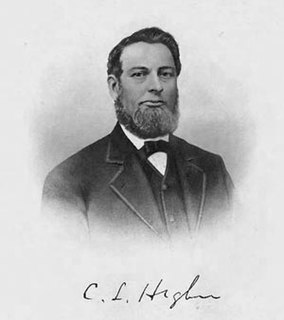
Chauncey Lawson Higbee was a member of the Latter Day Saint movement in Nauvoo, Illinois, and a brother to fellow Latter Day Saint Francis M. Higbee.
Charles A. Foster was an early member of the Latter Day Saint movement. He was the brother of Robert D. Foster.

The following outline is provided as an overview of and topical guide to the life and influence of Joseph Smith:
References
- Steven L. Shields, Divergent Paths of the Restoration: A History of the Latter Day Saint Movement, Restoration Research, Los Angeles: 1990, p. 29.
- Nauvoo [Illinois] Expositor, vol. 1, no. 1, June 7, 1844, Publishers: William Law et alia. See text and facsimile.